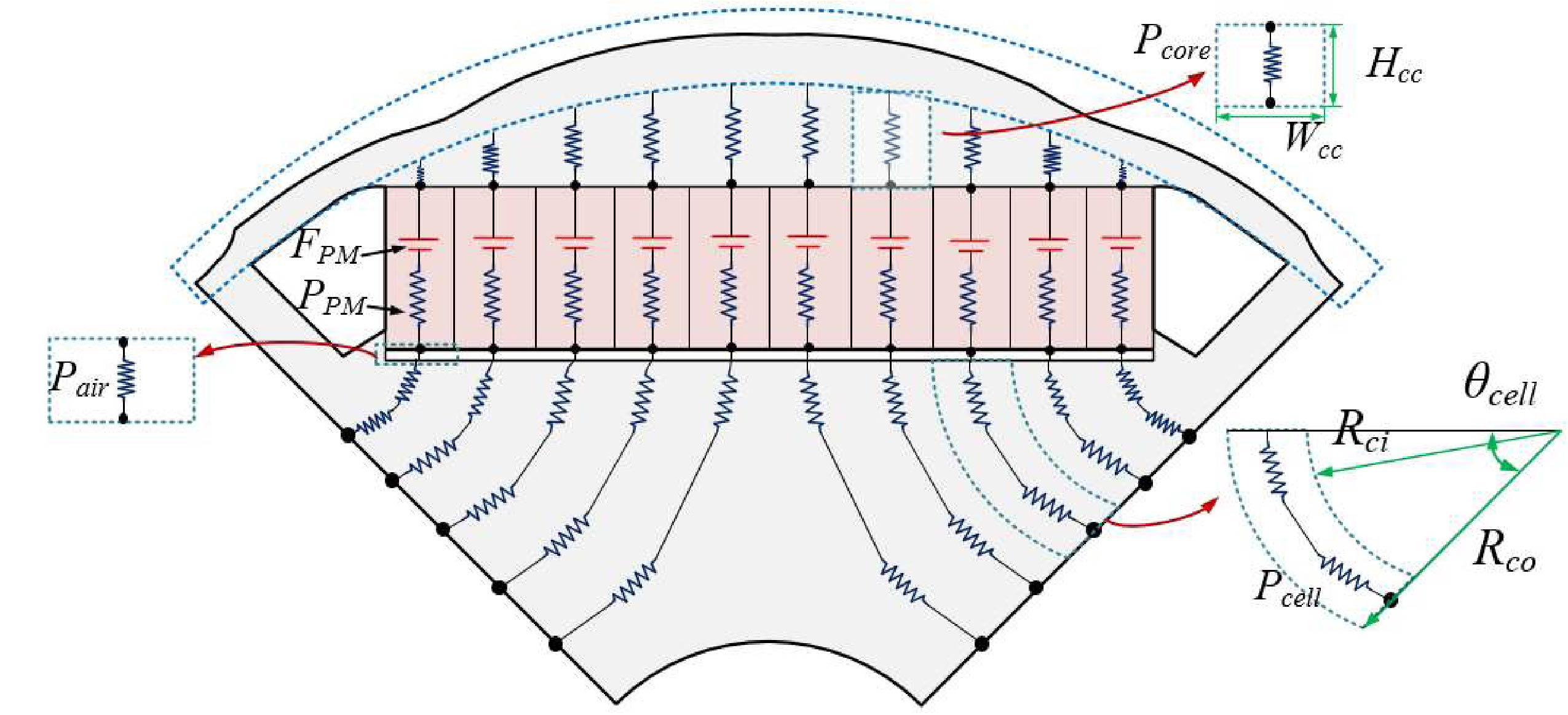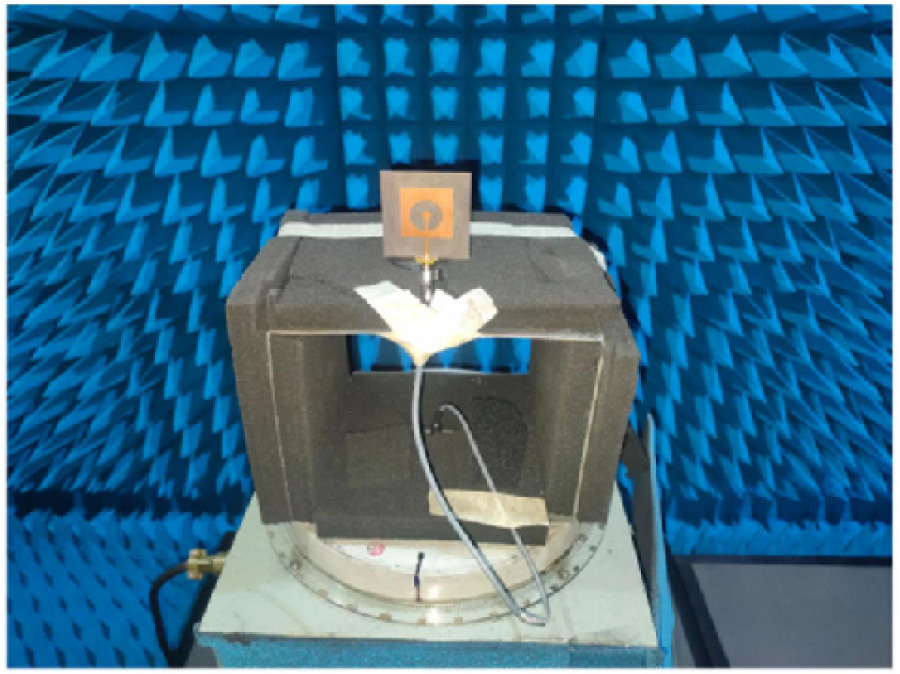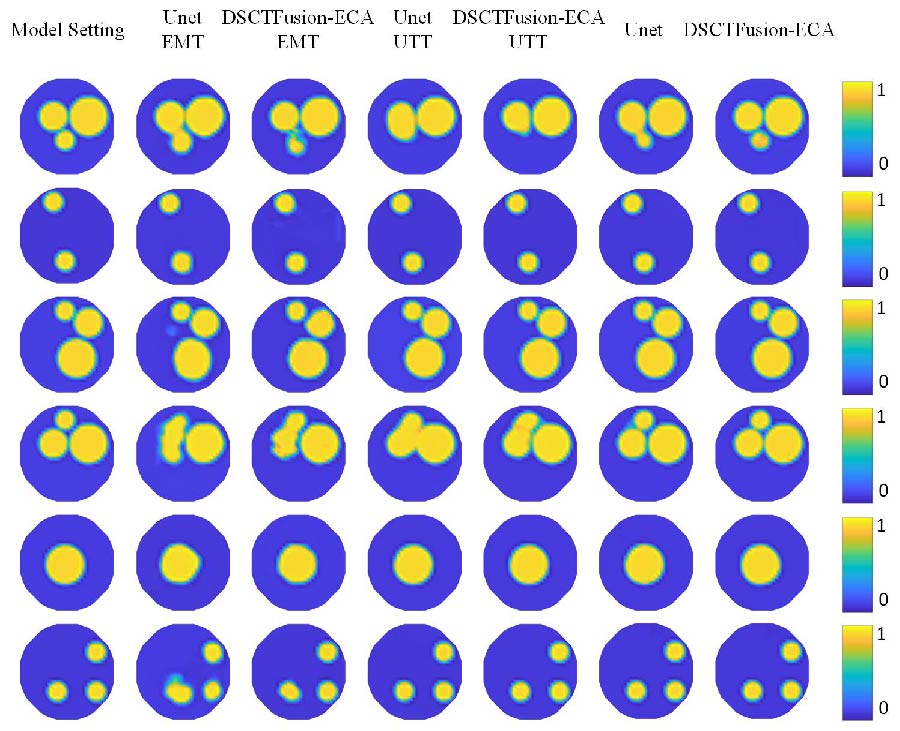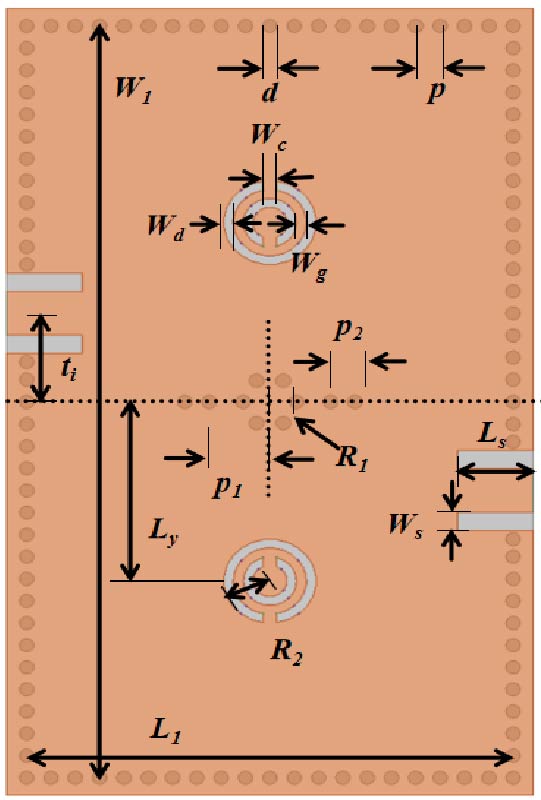Controllable Multimode Four-Passband Filter Based on Substrate-Integrated Waveguide
Mingming Gao,
Congying Wang,
Jingchang Nan,
Xinyu Wang and
Ya He
A metalized through-hole perturbation structure is proposed to effectively control multiple modes of substrate-integrated waveguide (SIW) filters. The method manipulates six modes (TE101, TE201, TE102, TE202, TE301, and TE401) result in the formation of three passbands. Subsequently, two symmetrical parallel complementary split ring resonators (CSRRs) are introduced without altering the filter's size. These rings generate resonances primarily excited by TE201 and TE102, allowing the filter to produce a fourth passband. Additionally, extra transmission zeros (TZs) are added, creating a perturbing effect on other modes. This further aids in controlling the resonances of these modes. The filter exhibits flexibility and controllability in terms of center frequency, bandwidth, and transmission zeros. The center frequencies of the four passbands are measured at 7.47 GHz, 9.84 GHz, 11.02 GHz, and 12.65 GHz, with return losses exceeding 18 dB. Additionally, there are six TZs, with the highest frequency point reaching -56.58 dB, indicating good in-band and out-of-band rejection. The measured and simulated results demonstrate satisfactory performance and applicability to multi-channel transmission in radar and satellite communication systems.



















